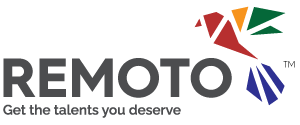Many small business owners wonder why and how outsourcing non-core activities outside their company could be a key factor in creating a stable workforce and improving efficiency and productivity.
By Outsourcing, companies can reduce the high costs of maintaining a pool of employees and managing payroll, including salaries, offices, equipment, and technology.
This is why there is no doubt that outsourcing is considered a remarkable business strategy for companies based in the US. At Remoto Workforce, we explain how to find the best outsourced talent when creating a new hiring strategy for the company you work for.
Outsourcing as a business strategy for the U.S. companies
Outsourcing involves hiring a third party outside the organization to develop specific products or services. Organizations can hire Outsourcing Partners to carry out productive operations initially created within their buildings.
According to Investopedia, outsourcing was primarily recognized as a business strategy in the 1980s to sustain free-market economies in globalized countries. Since then, companies have been hiring external employees to boost their growth and gain better position in the market.
Managing a remote staff in Mexico
Hiring and managing a remote workforce through an effective outsourcing strategy is less complicated than it seems. At Remoto, we present recommendations to successfully manage a remote staff and have the best employees you can imagine.
Have flexible organization
To create excellent work organization while maintaining flexibility, you must develop an effective human resource plan that considers titles, ideal job profiles, hours, and key tasks. Similarly, you should create this plan with the understanding that employees will be remote. Consequently, the focus will be on managing how to measure hours worked.
Strengthening communications
Working top-down communication skills is essential to managing remote employees based in Mexico. Consider implementing several strategies to strengthen communication with your remote employees in Mexico from the United States. To do this, you can install collaborative work software to better communicate with your remote employees.
Implement an onboarding strategy
Onboarding is a human resource management term that refers to the socialization of employees within companies. Through this socialization, you can motivate employees and thus achieve a more solid and flexible work organization.
Understanding the challenges of working from home
When creating a fully remote workforce, you will face different challenges related to lack of direct contact with employees, communication breakdowns, distractions and difficulties. Having a comprehensive understanding of these challenges allows you to anticipate solutions and solidify your company’s organizational structure.
Benefits of having a fully Remote Team
There are many benefits to creating a remote workforce through outsourcing. If you work in an HR department or have your own business, you should pay attention to the benefits that outsourcing brings to your business.
We mention three explicit benefits of hiring remote workers:
You can save 70% on labor costs
You can achieve significant savings on equipment, offices, wages, and unemployment taxes.
Easy to pay month-to-month
Remoto Workforce offers the great benefits of outsourcing remote workers with a fixed fee per employee per month.
Increase ROI and gain value
You can improve the efficiency of your business while maintaining control of your team, process, tasks, KPIs, and service quality.













